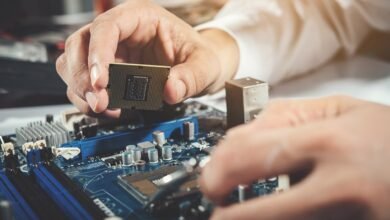
Step-by-Step Guide to Implementing IoT in Education In 2024? In the ever-evolving landscape of education, the integration of technology is paramount to providing a dynamic and effective learning environment. One such technology that has gained immense popularity is the Internet of Things (IoT). This step-by-step guide will walk you through the process of implementing IoT in education in 2024, ensuring a seamless transition and reaping the numerous benefits it offers.
Definition of IoT
The Internet of Things refers to the network of interconnected devices embedded with sensors and software, allowing them to communicate and share data. In the context of education, this translates to a network of smart devices contributing to a more interactive and data-driven learning experience.
Significance in Education
IoT in education opens up new possibilities for personalized learning, efficient classroom management, and improved overall learning outcomes. It transforms traditional educational approaches by leveraging the power of real-time data and connectivity.
Benefits of Implementing IoT in Education
Enhanced Learning Experience
By incorporating IoT devices, students can engage in immersive and interactive learning experiences. Smart devices, such as augmented reality tools, can bring lessons to life, making complex concepts more accessible and enjoyable.
Improved Classroom Management
IoT-enabled solutions streamline administrative tasks, allowing educators to focus more on teaching. Automated attendance tracking, resource allocation, and communication tools contribute to a well-managed and organized learning environment.
Personalized Learning Paths
IoT facilitates the collection of individual student data, enabling educators to tailor learning paths based on each student’s strengths and weaknesses. Personalized learning ensures that students progress at their own pace, enhancing overall comprehension and retention.
Challenges in Implementing IoT in Education
Security Concerns
As with any technology, IoT in education comes with security challenges. Safeguarding student data and ensuring the integrity of the network are crucial considerations. Implementing robust security protocols is essential to mitigate potential risks.
Infrastructure Requirements
Effective implementation of IoT requires a reliable and robust infrastructure. Educational institutions need to invest in high-speed internet, compatible devices, and a scalable network to support the seamless operation of IoT devices.
-
The Future of Pumps, Industry 4.0 and IoT15 November 2024
Cost Implications
While the benefits of IoT in education are substantial, the initial investment can be a barrier for some institutions. Funding challenges may arise, requiring strategic planning and exploration of available financial resources.
Step-by-Step Guide to Implement IoT in Education
Assessing Educational Goals
Before diving into IoT implementation, schools must define their educational objectives. Understanding the specific goals and challenges will guide the selection of IoT solutions that align with the institution’s vision.
Identifying Suitable IoT Devices
Different IoT devices serve varying educational needs. Schools should carefully choose devices such as smart boards, sensors, and interactive displays that complement their teaching methods and curriculum.
Establishing a Secure Network
Security is paramount in IoT implementation. Schools must invest in robust cybersecurity measures, including encryption, firewalls, and regular audits, to protect student data and maintain the integrity of the network.
Providing Teacher Training
Successful integration of IoT requires educators to be proficient in utilizing the technology. Training programs should be conducted to familiarize teachers with the selected devices and empower them to incorporate IoT seamlessly into their lessons.
Integrating IoT into Curriculum
IoT should not be a standalone feature but an integrated part of the curriculum. Lesson plans and activities should be designed to incorporate IoT devices, ensuring they enhance the learning experience rather than being a distraction.
Real-World Examples of IoT Implementation in Education
Smart Classrooms
Smart classrooms equipped with IoT devices enhance collaboration and engagement. Interactive displays, connected devices, and smart whiteboards create an immersive learning environment, making lessons more captivating.
Interactive Learning Apps
IoT-powered apps personalize learning experiences by adapting to individual student progress. These apps can provide real-time feedback, recommend additional resources, and create a customized learning journey for each student.
IoT-Based Student Tracking Systems
Student tracking systems, utilizing IoT, enable educators and parents to monitor students’ progress in real-time. This data-driven approach allows for timely interventions and personalized support for students who may need additional assistance.
Overcoming Implementation Hurdles
Collaborating with Tech Experts
Engaging with technology experts and consultants can alleviate the challenges associated with IoT implementation. Their expertise can guide institutions in selecting the right devices, securing the network, and addressing technical issues.
Addressing Privacy Concerns
Clear communication about data privacy and protection measures is crucial. Schools should establish transparent policies, obtaining consent when necessary, and ensuring that students, parents, and educators are aware of how their data is being used.
Seeking Funding Opportunities
To overcome budget constraints, educational institutions can explore various funding opportunities. Grants, partnerships with tech companies, and government initiatives may provide financial support for IoT implementation projects.
Future Trends in IoT for Education
Continuous Technological Advancements
As technology continues to evolve, IoT in education will witness continuous advancements. Smarter devices, improved connectivity, and more sophisticated applications will shape the future of education.
Growing Integration with AI
The synergy between IoT and Artificial Intelligence (AI) is a promising avenue. The integration of AI algorithms with IoT devices will enable personalized and adaptive learning experiences. AI-driven analytics can analyze vast amounts of data collected by IoT devices, providing valuable insights to further enhance the education system.
Impact on Remote Learning
With the global shift towards remote and hybrid learning models, IoT plays a pivotal role in ensuring the effectiveness of virtual education. Smart devices, when integrated strategically, create a virtual classroom environment that fosters engagement and collaboration among students and teachers.
Success Stories of IoT in Education
Notable Educational Institutions
Several renowned educational institutions have successfully implemented IoT to transform their learning environments. Institutions that embrace technology as a tool for enhancing education often see improved student outcomes, increased engagement, and a positive impact on the overall learning culture.
Positive Outcomes for Students
Students benefit from IoT implementation through improved access to resources, personalized learning experiences, and the development of essential skills for the digital age. Positive outcomes include increased motivation, better academic performance, and enhanced critical thinking abilities.
Read More: A Guide to IoT Analytics: Extracting Actionable Insights In 2024
Teacher and Parent Feedback
Feedback from educators and parents involved in IoT-powered education is overwhelmingly positive. Teachers appreciate the tools that simplify administrative tasks and enhance their ability to cater to individual student needs. Parents value the transparency and real-time insights into their child’s educational journey.
Recap of Benefits
In conclusion, implementing IoT in education in 2024 offers a myriad of benefits, from enhancing the learning experience to addressing individual student needs. The strategic integration of IoT devices contributes to a more dynamic, efficient, and engaging educational environment.
Encouraging Educational Transformation
As we navigate the future of education, embracing technological advancements like IoT is essential. The transformation brought about by IoT goes beyond improving current practices; it lays the foundation for a more adaptive and learner-centric education system.
Embracing IoT for Future Learning
Educational institutions must embrace the potential of IoT to stay relevant in the ever-changing landscape. The investment in IoT is an investment in the future of education, equipping students with the skills and knowledge necessary for success in the digital age.
FAQs : IoT in Education
How does IoT enhance the learning experience?
IoT enhances the learning experience by providing interactive and personalized learning opportunities. Smart devices create immersive environments, making lessons more engaging and effective.
Are there privacy concerns associated with IoT in education?
Yes, privacy concerns exist. Institutions must implement robust security measures to protect student data and ensure transparent communication about privacy policies.
What types of devices can be integrated into an educational IoT system?
Devices such as smart boards, sensors, interactive displays, and connected apps can be integrated to create a comprehensive educational IoT system.
How can educational institutions overcome budget constraints in implementing IoT?
Educational institutions can explore funding opportunities, collaborate with tech experts, and prioritize strategic planning to overcome budget constraints in IoT implementation.
Is teacher training essential for successful IoT implementation in education?
Yes, teacher training is crucial. Educators need to be proficient in utilizing IoT devices to ensure effective integration into the curriculum and maximize the benefits for students.







